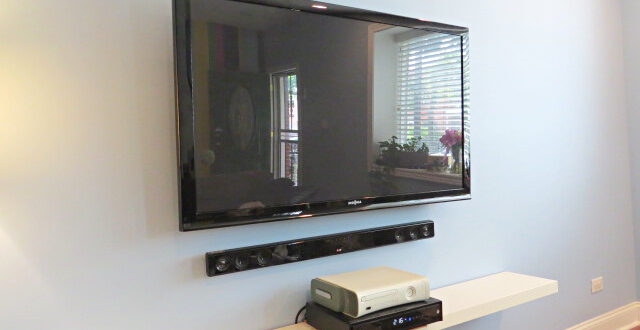Taming the Tangled Jungle: Why Wire Hiding Matters in Your Living Room
Let’s be honest, most living rooms aren’t exactly showcased on the pages of design magazines. They’re real, lived-in spaces, often bearing the battle scars of everyday life. Among these battle scars, the most persistent offender is often the dreaded cable clutter. We’re talking about that chaotic web of wires snaking their way from your TV to your game console, power outlets to lamps, creating an unsightly mess that can detract from even the most stylish décor. But, you know, it’s more than just aesthetics; untamed cords present a serious tripping hazard, a dust bunny breeding ground, and a potential chew toy for curious pets (or, let’s be honest, even less-than-graceful humans!).
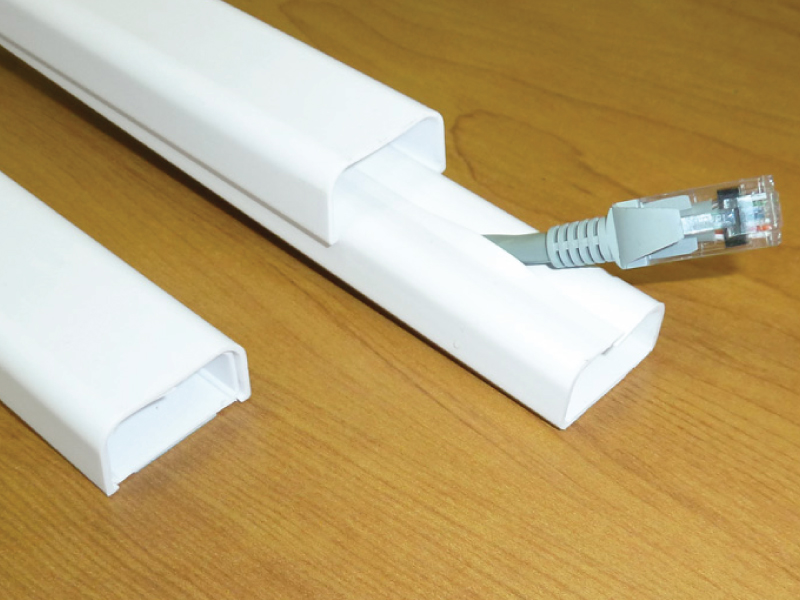
So, why is wire hiding so crucial? Well, beyond the obvious safety and cleanliness benefits, a clutter-free living room can do wonders for your mental well-being. Imagine walking into a serene, organized space instead of being greeted by a visual assault of tangled cords. It’s like a visual exhale, allowing you to relax and unwind. Plus, a clean, organized space just feels more inviting, doesn’t it? It’s easier to entertain guests and enjoy your downtime when you’re not constantly reminded of the disorganized chaos lurking beneath your entertainment center.
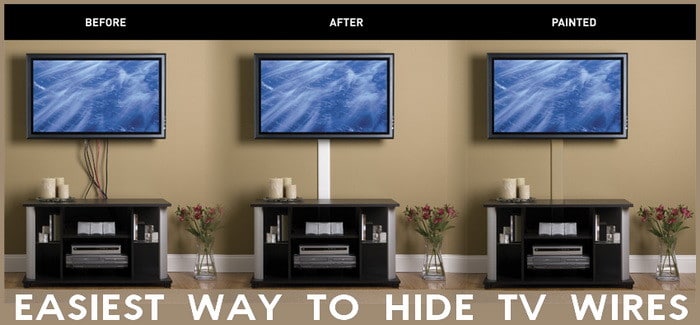
In this guide, we’re diving deep into the world of wire hiding, providing you with a comprehensive toolkit of tips, tricks, and creative solutions to transform your living room from a cable-ridden nightmare into a serene, organized haven. We’ll explore everything from simple, budget-friendly options to more elaborate, permanent solutions, ensuring there’s something for every skill level and aesthetic preference.
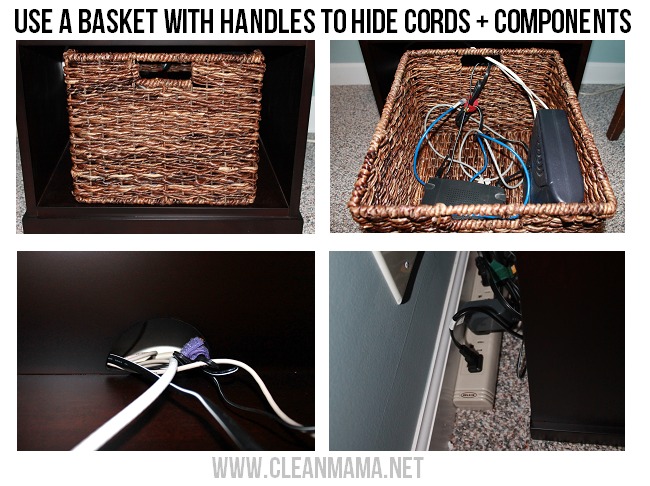
The Wire Hiding Arsenal: Essential Tools and Supplies
Before we embark on our wire-hiding adventure, let’s gather our supplies. Having the right tools on hand will make the process smoother, more efficient, and ultimately, more satisfying. Here’s a list of essential items to consider:
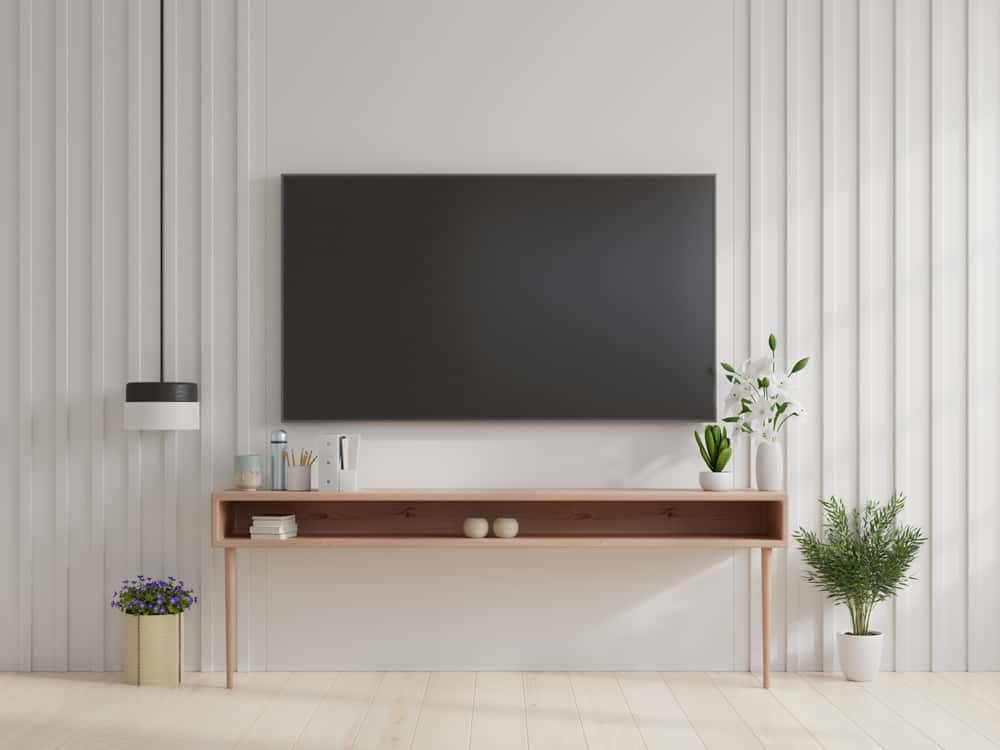
- Cable Ties, Zip Ties, or Velcro Straps: These are your trusty companions for bundling and organizing loose wires. Choose a variety of sizes and materials to suit different needs. Velcro straps are particularly useful for cords that you frequently need to access or rearrange.
- Cable Clips: These little wonders adhere to surfaces and provide a secure pathway for cables, keeping them neatly tucked away along walls, baseboards, or furniture. Look for clips with strong adhesive backings to ensure they stay in place.
- Cable Sleeves or Wraps: These flexible tubes encase multiple cables, creating a single, streamlined bundle. They come in various colors and materials, allowing you to match your décor or add a pop of color.
- Cord Concealers or Raceway Channels: These are paintable plastic or metal channels that mount to walls or baseboards, providing a discreet and effective way to hide cables. They’re ideal for longer runs of cable and can be easily customized to blend seamlessly with your existing décor.
- Power Strips with Surge Protection: An organized power strip not only keeps your cables tidy but also protects your valuable electronics from power surges. Look for models with multiple outlets and built-in cord management features.
- Drill (Optional): If you’re planning on installing wall-mounted cord concealers or creating custom cable routing solutions, a drill may be necessary.
- Measuring Tape: Accurate measurements are crucial for determining the length of cable concealers, the placement of cable clips, and the overall layout of your wire-hiding system.
- Pencil: For marking the location of cable clips, screws, or other hardware.
- Scissors or Wire Cutters: For trimming cable ties, sleeves, or other materials to the desired length.
- Level: To ensure that wall-mounted cord concealers and other hardware are installed straight and level.
Creative Wire Hiding Techniques: From Simple Solutions to DIY Masterpieces
Now for the fun part: implementing our wire-hiding strategies! Here’s a breakdown of various techniques, ranging from quick and easy fixes to more involved DIY projects:
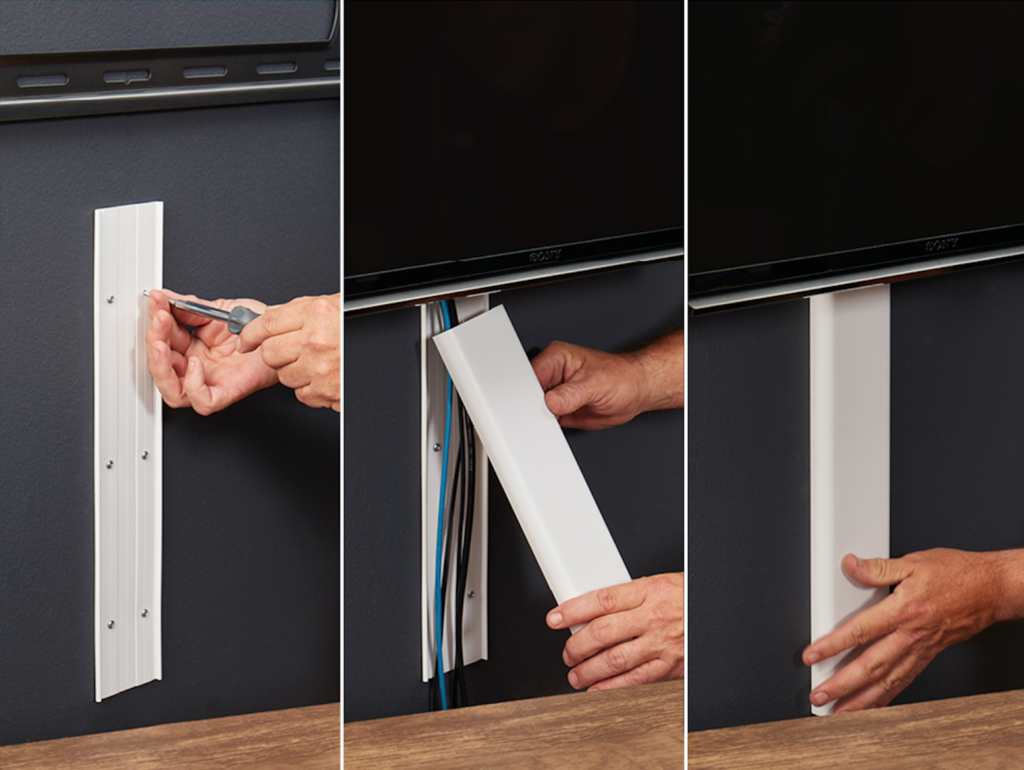
1. The Art of Concealment: Using Furniture and Décor
One of the simplest and most effective ways to hide wires is to strategically position your furniture and décor. Think about how you can use existing elements in your living room to your advantage:
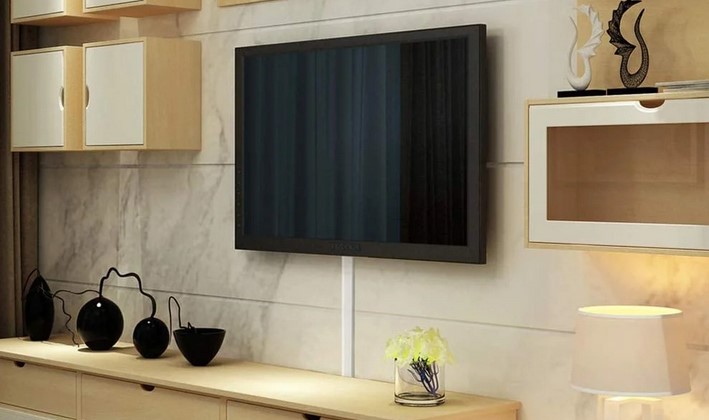
- Rearrange Furniture: Consider moving your entertainment center closer to a power outlet to minimize the length of exposed cables. Place lamps behind sofas or chairs to conceal their cords.
- Employ Decorative Objects: Use vases, plants, books, or other decorative objects to strategically block the view of unsightly wires. A well-placed plant can work wonders in masking a cluster of cords behind your TV.
- Utilize Fabric: Drape a throw blanket over the back of your sofa or armchair to conceal cables running along the wall. You can also use fabric panels or curtains to hide wires behind furniture.
- Baskets and Bins: Place a decorative basket or bin near your entertainment center to corral loose cables and power strips. This is a quick and easy way to create a more organized and visually appealing space.
2. Cable Management Magic: Ties, Clips, and Sleeves
These are the workhorses of wire hiding, providing a practical and affordable way to bundle, organize, and conceal cables:
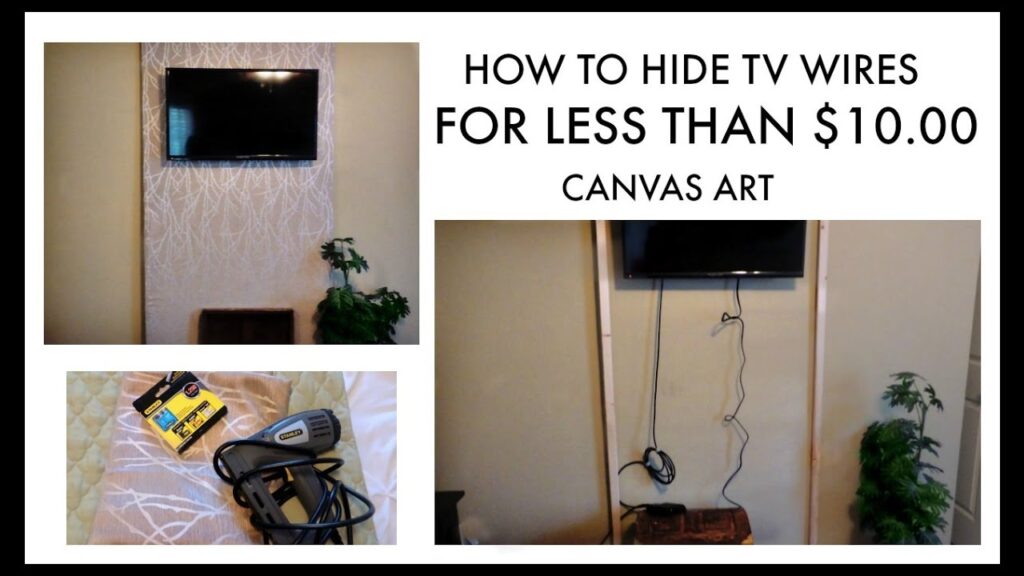
- Cable Ties and Zip Ties: Use these to bundle multiple cables together, creating a single, streamlined unit. Secure them loosely enough to avoid crimping the wires.
- Velcro Straps: These are a reusable and adjustable alternative to cable ties, making them ideal for cords that you frequently need to access or rearrange.
- Cable Clips: Attach these to walls, baseboards, or furniture to guide cables along a desired path. Choose clips with adhesive backings for easy installation or screw-in clips for a more secure hold.
- Cable Sleeves and Wraps: These flexible tubes encase multiple cables, creating a clean and organized look. They come in various colors and materials, allowing you to customize them to your décor.
3. Cord Concealers and Raceway Channels: The Discreet Solution
For a more permanent and polished look, consider using cord concealers or raceway channels. These paintable plastic or metal channels mount to walls or baseboards, providing a discreet way to hide cables. They’re ideal for longer runs of cable and can be easily customized to blend seamlessly with your existing décor:
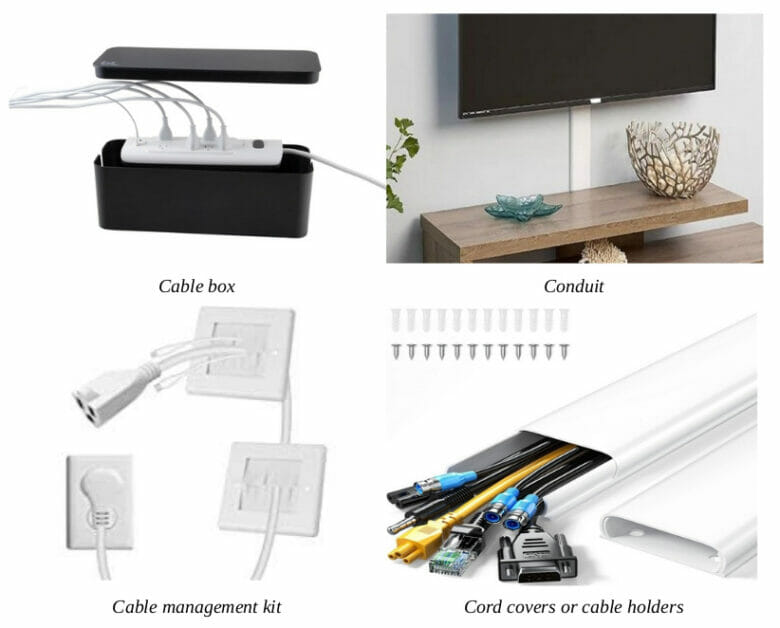
- Choose the Right Size: Select a cord concealer that’s large enough to accommodate all of your cables without overcrowding.
- Measure and Cut: Measure the length of the wall or baseboard where you want to install the cord concealer and cut it to size using a saw or utility knife.
- Mount the Concealer: Most cord concealers come with adhesive backing or pre-drilled holes for screws. Follow the manufacturer’s instructions to securely mount the concealer to the wall or baseboard.
- Paint to Match: Paint the cord concealer to match the color of your wall or baseboard for a seamless and integrated look.
4. DIY Cable Management Projects: Unleash Your Creativity
For the adventurous DIY enthusiast, there are countless ways to create custom cable management solutions. Here are a few ideas to get your creative juices flowing:
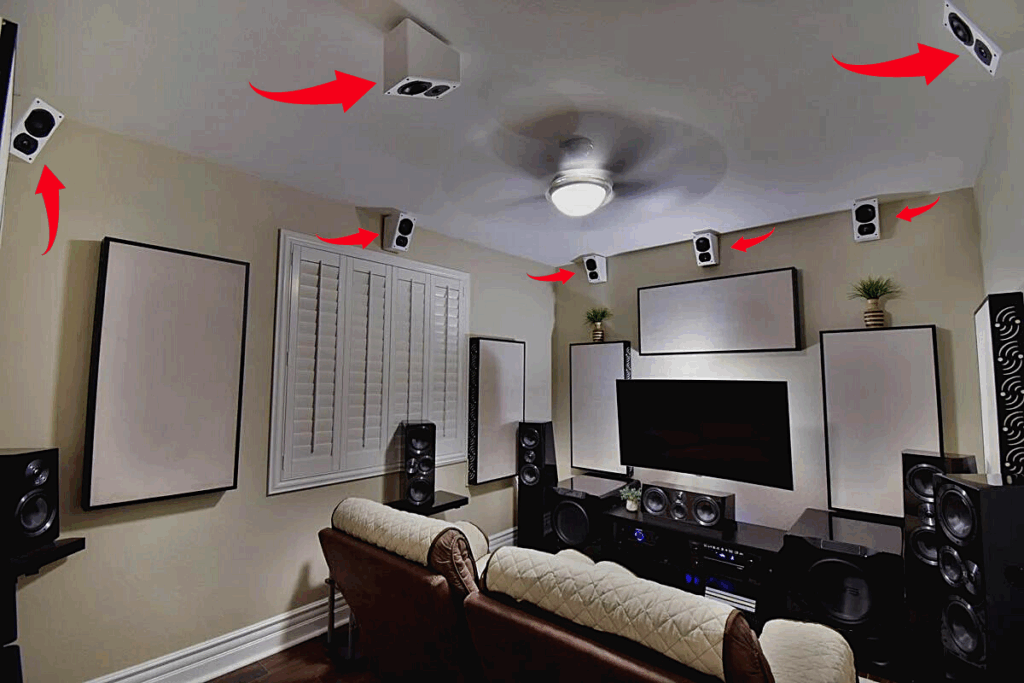
- Hidden Compartments: Build a custom cabinet or shelving unit with hidden compartments specifically designed to house cables and power strips.
- Floating Shelves with Cable Management: Install floating shelves with integrated cable management systems, allowing you to conceal wires while displaying your favorite décor.
- Faux Wall Panels: Create a faux wall panel to conceal a large cluster of cables behind your entertainment center. You can use wood, fabric, or other materials to create a decorative panel that blends seamlessly with your décor.
- Upcycled Materials: Get creative with upcycled materials to create unique and eco-friendly cable management solutions. Use old cardboard boxes, PVC pipes, or even fabric scraps to create custom cable organizers.
5. The Artful Distraction: Camouflaging Your Cords
Sometimes, the best way to hide something is to make it blend in. Here are some clever ways to camouflage your cords:
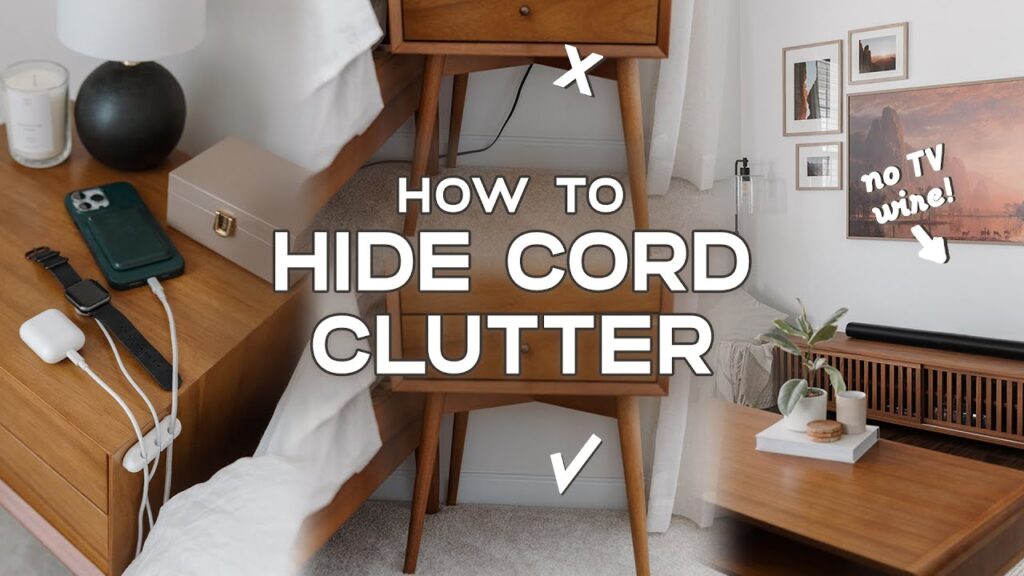
- Color-Matching: Use colored tape or paint to match your cords to the color of your walls. This is especially effective for cords that run along baseboards or behind furniture.
- Decorative Cord Covers: Purchase decorative cord covers that mimic the look of plants, vines, or other natural elements. These can add a touch of whimsy and disguise your cords at the same time.
- Woven Cord Sleeves: Use woven cord sleeves in neutral colors to blend your cords with the surrounding décor. These sleeves can also add texture and visual interest to your space.
Beyond the Basics: Advanced Wire Hiding Techniques
For those seeking a truly seamless and professional-looking wire-hiding solution, these advanced techniques may be worth considering:
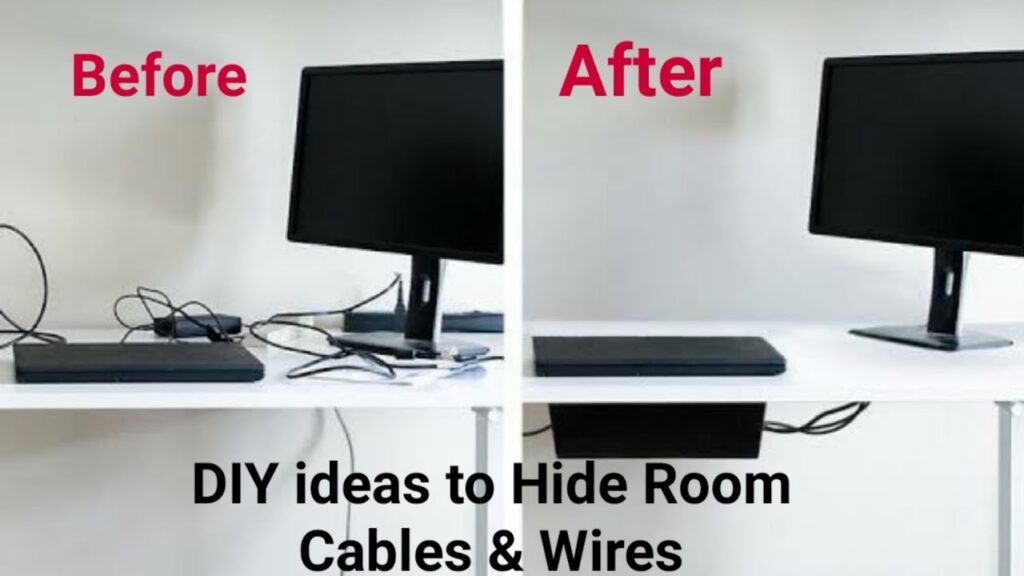
1. In-Wall Cable Management: The Invisible Solution
This involves running cables inside the walls, creating a completely clean and uncluttered look. However, this technique requires careful planning and may involve cutting into drywall. If you’re not comfortable with electrical work, it’s best to hire a qualified electrician to handle this project.
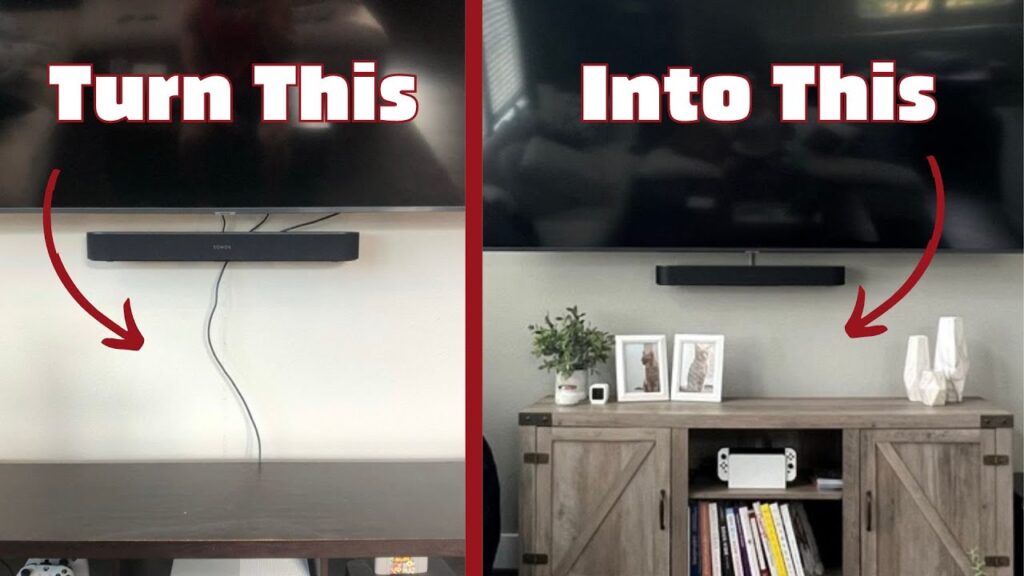
- Planning and Preparation: Before you start, carefully plan the routing of your cables and ensure that there are no obstructions in the walls, such as pipes or electrical wiring.
- Cutting into Drywall: Use a drywall saw to carefully cut holes in the wall where you want to run the cables. Be sure to wear safety glasses and a dust mask to protect yourself from debris.
- Running the Cables: Use a fish tape or wire snake to pull the cables through the wall. Be careful not to damage the cables or the wall.
- Installing Wall Plates: Install wall plates with cable connectors to provide a clean and professional-looking finish.
- Patching and Painting: Patch the holes in the drywall and paint them to match the surrounding wall.
2. Wireless Alternatives: Cutting the Cord
While not always feasible, exploring wireless alternatives can significantly reduce the number of cables in your living room. Consider these options:
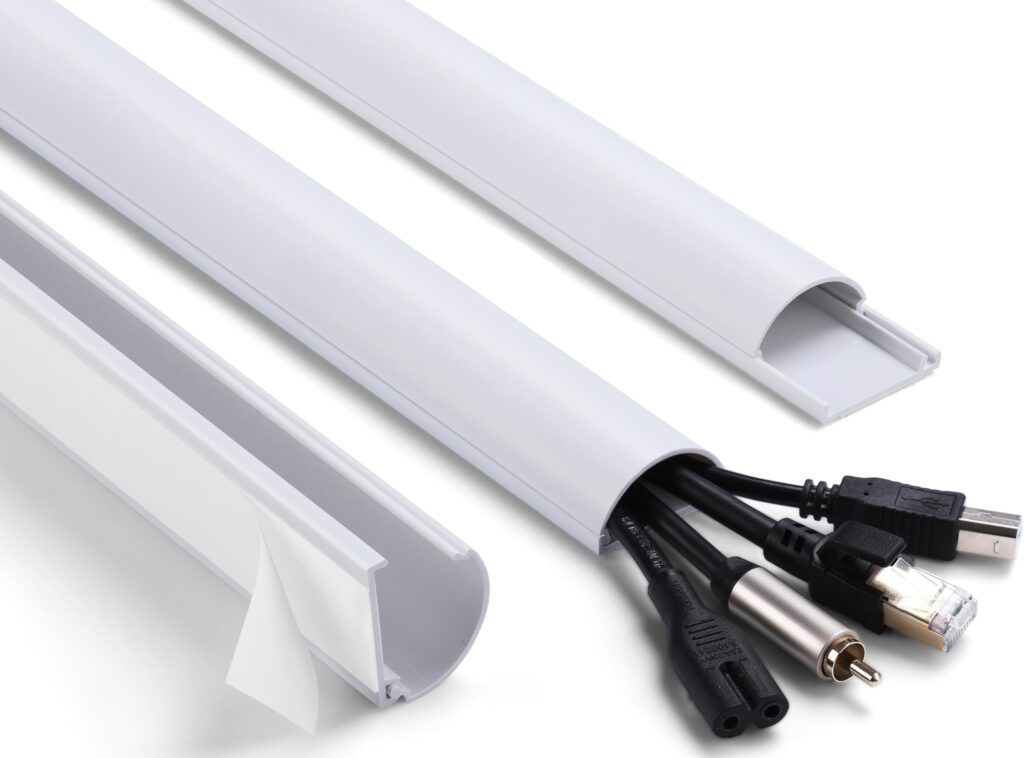
- Wireless Speakers: Opt for wireless speakers that connect to your audio system via Bluetooth or Wi-Fi.
- Wireless Streaming Devices: Use wireless streaming devices like Chromecast or Apple TV to stream content to your TV without the need for HDMI cables.
- Wireless Gaming Consoles: Some gaming consoles offer wireless connectivity options, allowing you to connect to your TV without using HDMI cables.
- Bluetooth Keyboards and Mice: Ditch the wired keyboard and mouse for Bluetooth versions to eliminate clutter on your desk or coffee table.
3. Smart Home Integration: Automated Cable Management
If you’re a tech enthusiast, you can integrate your cable management system with your smart home setup. This allows you to control your devices remotely and automate tasks like turning off lights and appliances when you’re not using them.
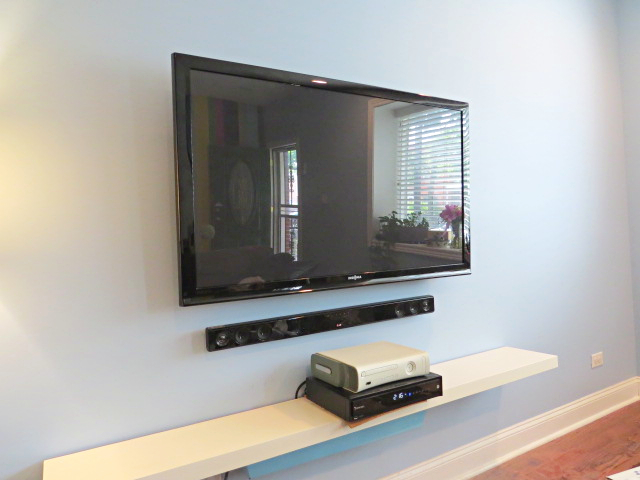
- Smart Power Strips: Use smart power strips that can be controlled remotely via your smartphone or voice assistant.
- Smart Lighting: Install smart light bulbs that can be controlled via your smartphone or voice assistant.
- Home Automation Systems: Integrate your cable management system with a home automation system like SmartThings or Wink to create custom automation routines.
Common Wire Hiding Mistakes to Avoid
Even with the best intentions, it’s easy to make mistakes when hiding wires. Here are some common pitfalls to avoid:
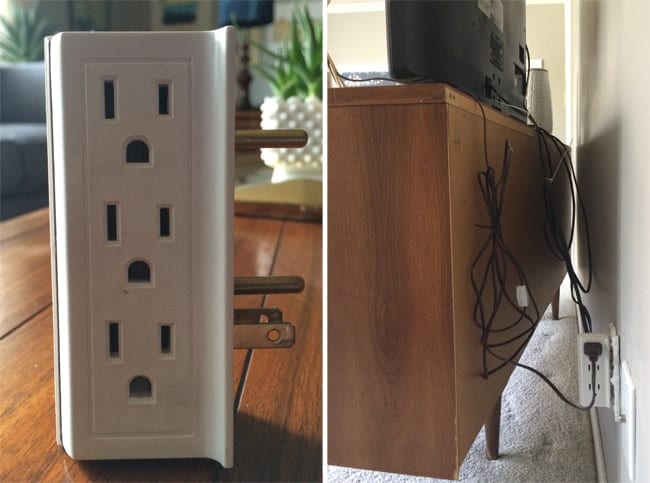
- Overcrowding Cables: Don’t try to cram too many cables into a single cord concealer or cable sleeve. This can damage the cables and make it difficult to access them later.
- Using the Wrong Size Cord Concealer: Choose a cord concealer that’s large enough to accommodate all of your cables without overcrowding.
- Ignoring Safety Precautions: Always unplug electronic devices before working with cables. Avoid running cables under rugs or furniture where they can be damaged or create a fire hazard.
- Neglecting Cord Management: Don’t just hide the cables; manage them. Use cable ties, clips, and sleeves to keep them organized and prevent them from becoming tangled.
- Forgetting Future Needs: Consider your future needs when planning your cable management system. Will you be adding new devices to your living room in the future? Make sure you have enough space and flexibility to accommodate them.
Maintaining Your Wire-Free Oasis: Keeping Your Living Room Tidy
Congratulations, you’ve successfully tamed the tangled jungle and transformed your living room into a wire-free oasis! But the job doesn’t end there. To maintain your newfound tranquility, it’s important to establish a few simple habits:

- Regularly Dust and Clean: Dust and clean your cable management system regularly to prevent dust buildup and keep your living room looking its best.
- Inspect for Damage: Periodically inspect your cables and cord concealers for damage. Replace any damaged cables or cord concealers immediately to prevent electrical hazards.
- Reorganize as Needed: As you add or remove devices from your living room, reorganize your cable management system to keep it tidy and efficient.
- Teach Family Members: Educate your family members about your cable management system and encourage them to maintain it.
Conclusion: Embrace the Serenity of a Clutter-Free Living Room
Hiding wires in your living room may seem like a daunting task, but with the right tools, techniques, and a little creativity, it’s entirely achievable. By implementing the strategies outlined in this guide, you can transform your living room from a cable-ridden chaos into a serene, organized haven. So, roll up your sleeves, gather your supplies, and embark on your wire-hiding adventure. Your eyes (and your sanity) will thank you for it. And remember, a clutter-free living room isn’t just about aesthetics; it’s about creating a more relaxing, inviting, and enjoyable space for you and your loved ones to enjoy.
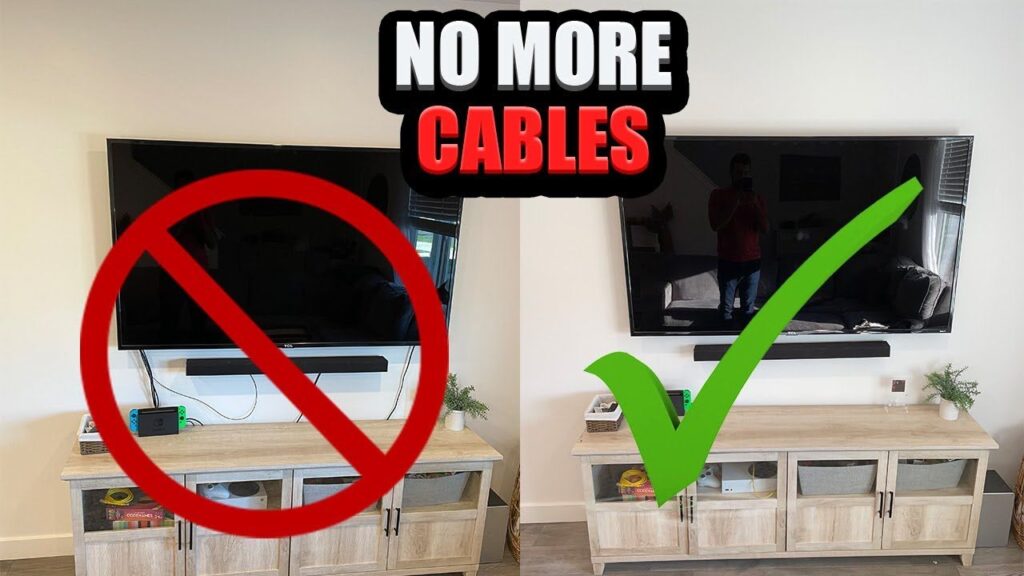
 Nimila
Nimila
